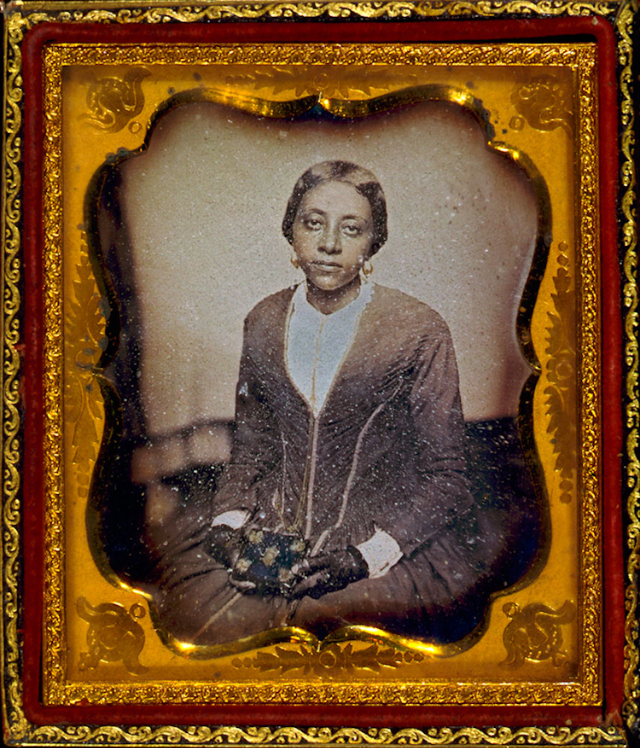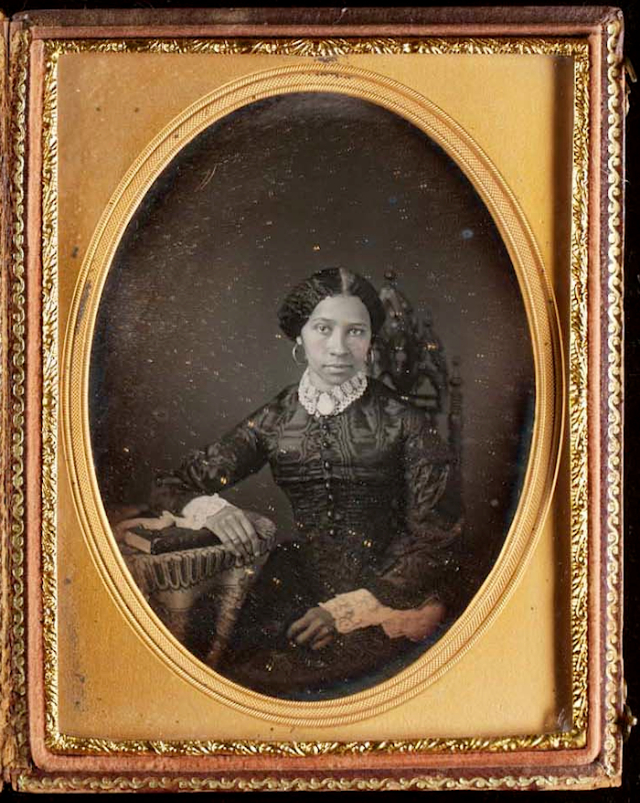Daguerreotypes, popular from the 1840s to the early 1860s, offer a fascinating glimpse into the lives of women and girls during the early Victorian era. As the first commercially successful photographic process, they democratized portraiture, making it accessible to the middle classes, whereas previously only the wealthy could afford painted likenesses.
Portraits often showcase the evolving styles of the mid-19th century. In the 1840s, dresses often featured draped bodices, closely fitted sleeves, and V-shaped necklines, sometimes with ruffles. By the 1850s, bishop sleeves (gathered at the wrist) became popular. Bonnets, shawls, and intricate hairstyles (like “sausage curls” for girls) were also common.
Each daguerreotype is a one-of-a-kind image created directly on a silver-plated copper sheet. Unlike later photographic processes, there was no negative from which multiple copies could be made. Despite early limitations, daguerreotypes are renowned for their incredible resolution and minute detail, capturing textures, fabrics, and facial features with remarkable clarity.
Especially in the early 1840s, exposure times could range from several seconds to several minutes, depending on lighting conditions. This often meant subjects had to remain very still, leading to the serious, posed expressions often seen in these portraits. To add a touch of realism, many daguerreotypes were hand-colored, particularly on lips, cheeks, eyes, and jewelry. This was often a task performed by women.







































.jpg)





0 comments:
Post a Comment